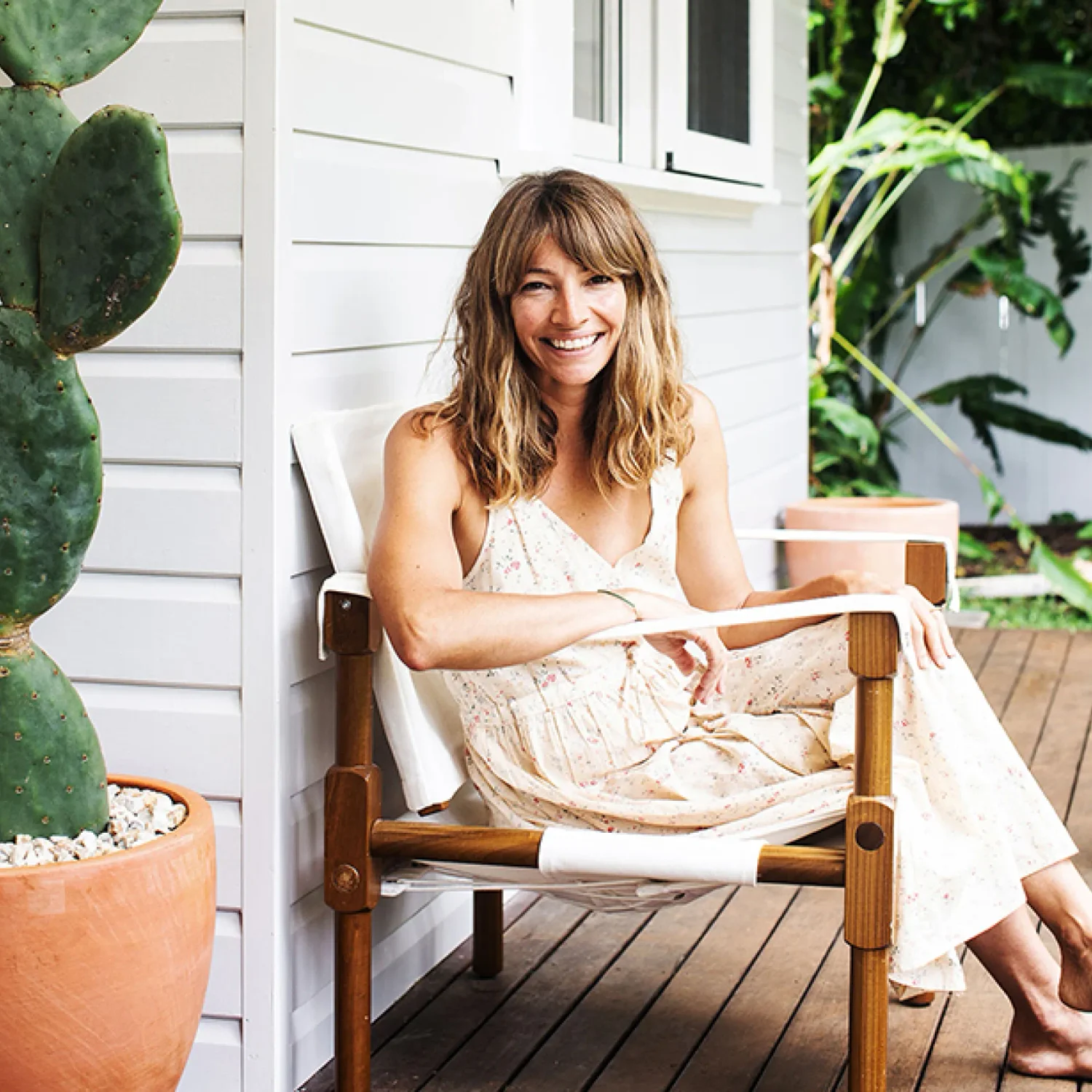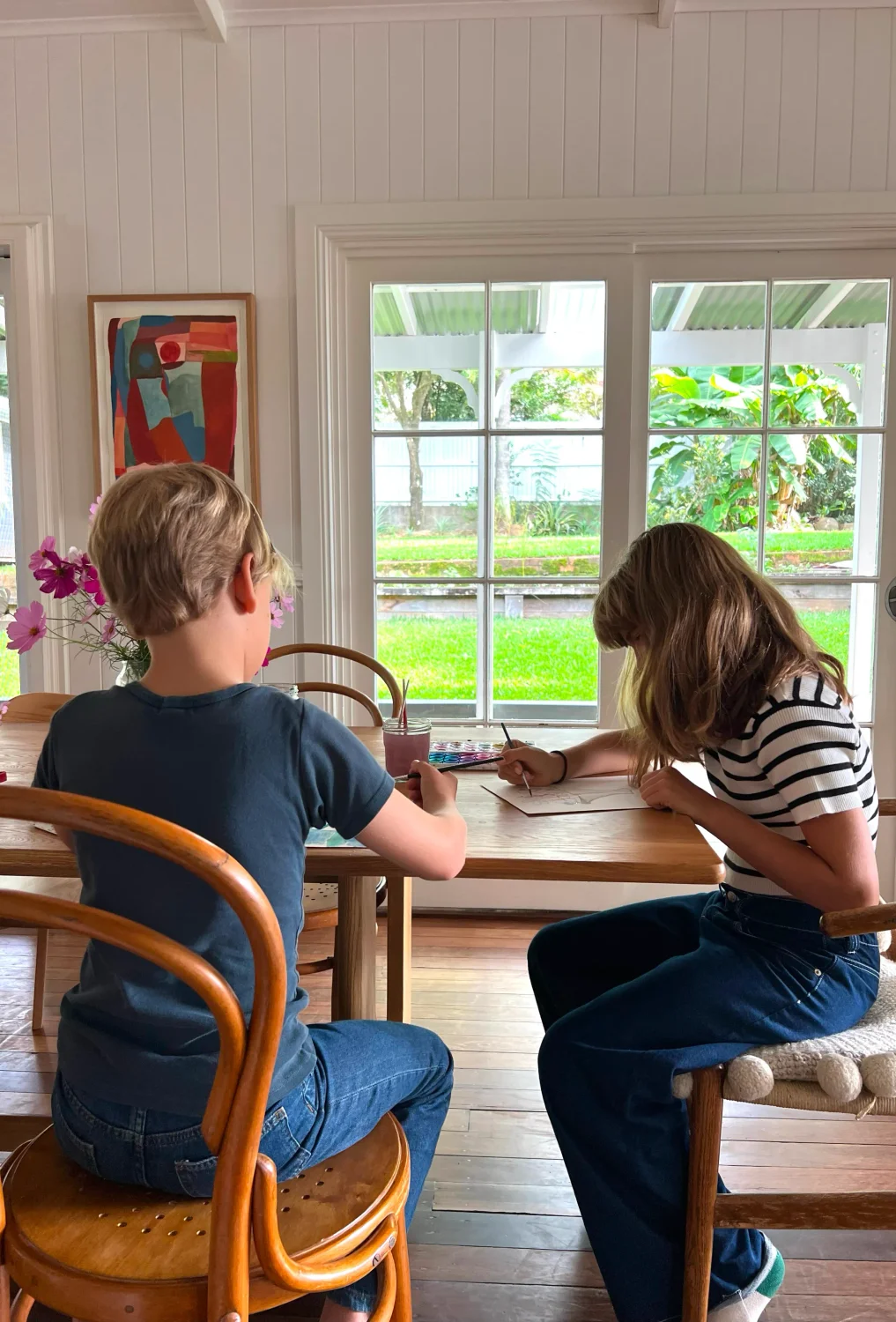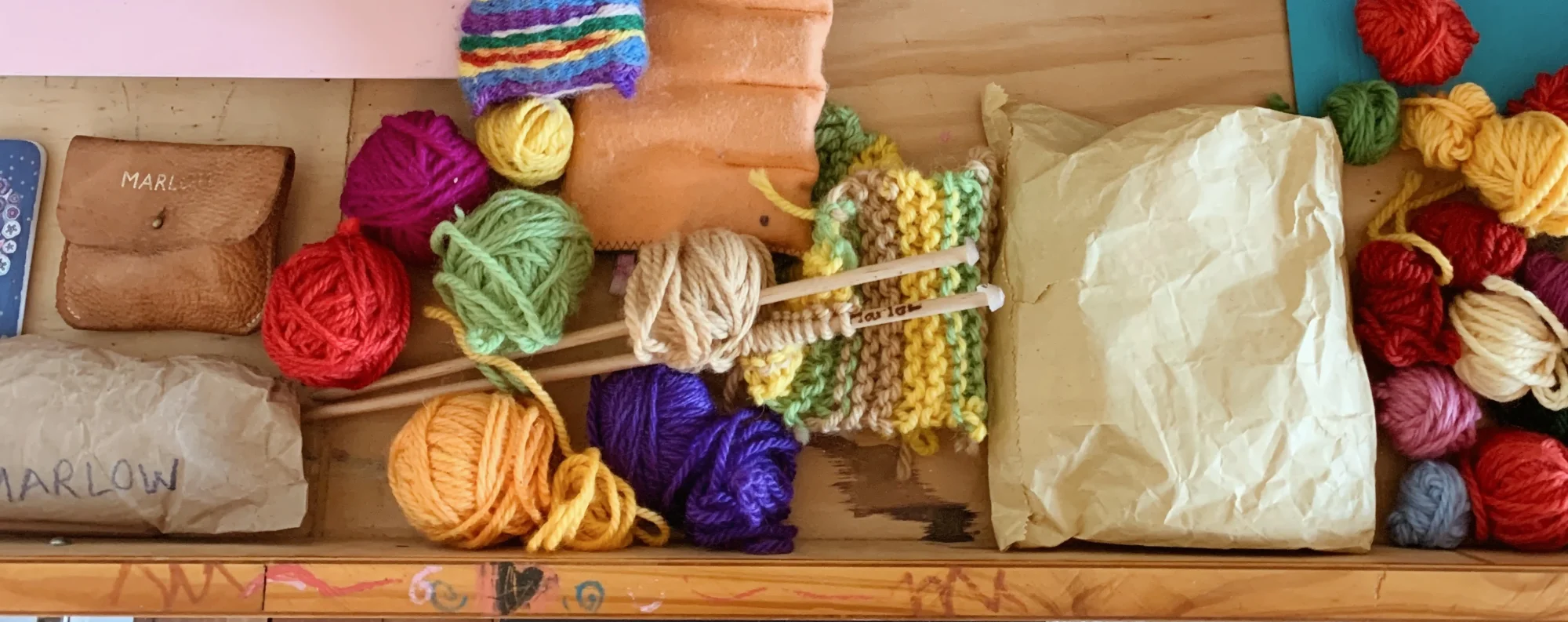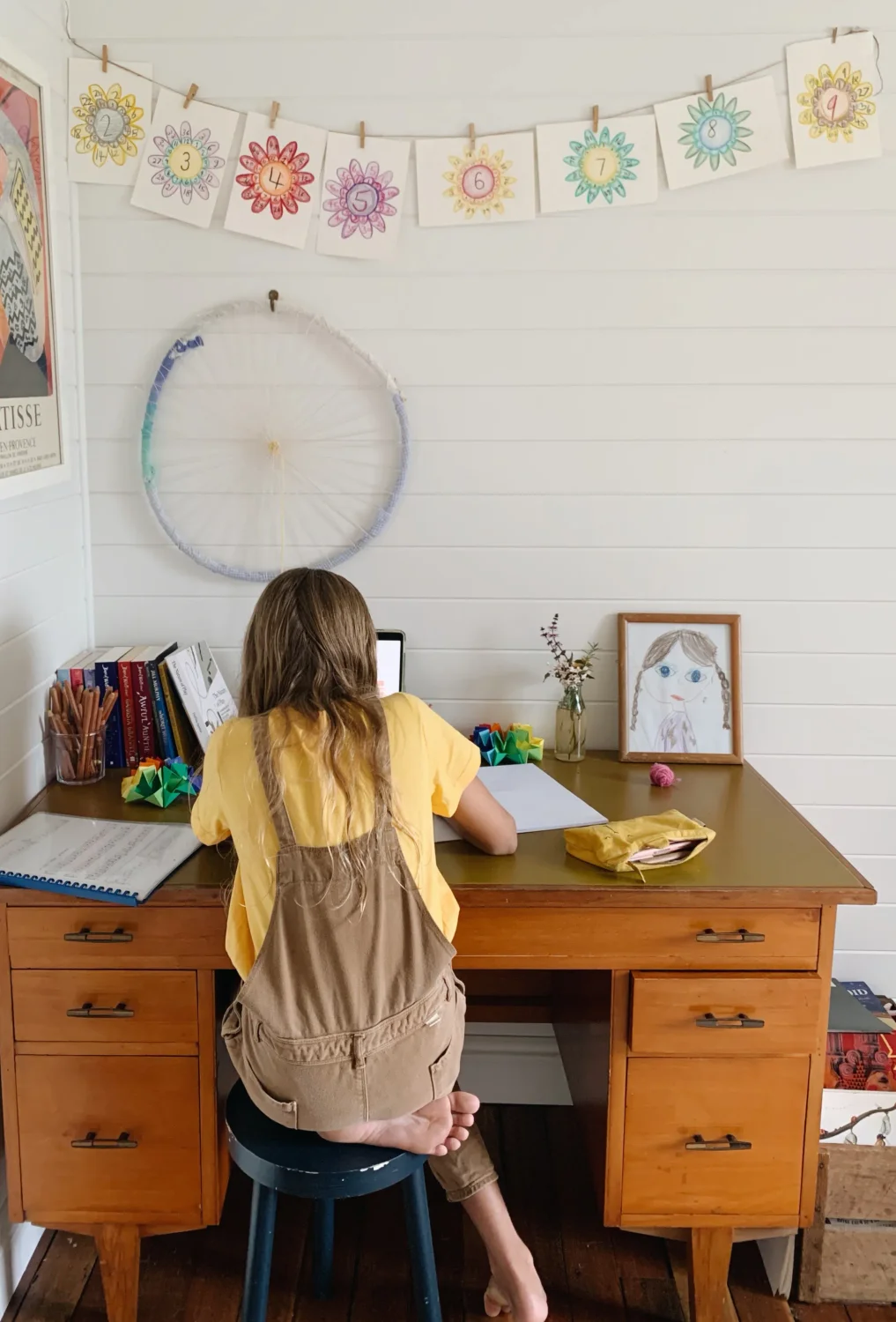Stories
The importance of letting your kids be bored
1 January 1970
In a world filled with constant stimuli, we need to give our kids space to do nothing, maybe even be a little bit bored. Because it is these idle moments that allow our kids to explore their thoughts, be curious about their surroundings, experiment with ideas and let their imagination run wild.
Written by Courtney Adamo
I grew up in a big family on a flower farm in America. My four siblings and I didn’t have neighbours to play with or shops nearby, but we had each other and we learned quickly how to turn boredom into creative pursuits. In our kitchen, we had a big craft cupboard filled with art supplies: papers, crayons, scissors and glue. Craft projects were a huge part of my childhood, and as the eldest child I was often coming up with ideas and delegating tasks to my younger siblings. We’d spend hours working together on our creations — a jungle-themed set for a play we were performing, festive decorations at Christmas time, big birthday banners hung over our fireplace mantle or handmade puppets for a puppet show. Some of my fondest childhood memories involve crafting with my siblings, particularly the creative process more so than the results.


When I began to have children of my own, I knew I wanted to encourage this same creativity and self expression. I wanted my kids to discover the joy of artistic creation — the curiosity and discovery, the imagination and ideas, and most importantly the journey of working together in their creations and the closeness that comes out of that.
“In a world filled with constant stimuli, we need to give our kids space to do nothing, maybe even be a little bit bored. It’s so important!”



Obviously, it’s not always calm and quiet in our house (I wish!), but these moments of creativity in our home definitely spark joy and inspiration and will hopefully be the foundation for creative passions to develop and self-expression to flourish.
“Some of my fondest childhood memories involve crafting with my siblings, particularly the creative process more so than the results”


Here are 5 ways to encourage creativity in children:
1
Give them a designated space for creativity
1
Whether it’s a desk in their bedroom, a shared craft bench or even a cosy corner with art supplies, having a dedicated area sends the message that creativity is valued and encouraged and it empowers children to explore their imagination freely. We recently created a shared sewing/craft desk in our office and it’s almost always being used!
2
Invest in high-quality, open-ended art supplies
2
We love using open-ended supplies that allow for uninhibited creative expression. We also choose supplies made from natural materials wherever possible - like Lyra wooden coloured pencils, natural modelling beeswax, wool felt and yarn, and good quality paints and paper. We’ve found that when kids have good materials to work with they engage better and invest more time in refining their skills, ultimately leading to a greater sense of achievement. (We also recommend a dedicated craft cupboard to store supplies if space allows!)


3
Expose kids to art
3
From the art we display in our homes to the books we keep on our coffee tables, the art that surrounds our kids will ignite their imagination and deepen their appreciation for artistic expression. (My kids are often using the art in our home as inspiration for their paintings, or they will get out the art books to use as references!) We also love taking our kids to museums, galleries and cultural events to broaden their creative horizons and to expose them to different types of art.
4
Model creativity and curiosity
4
Our kids are always watching us! The best way to encourage creativity is to be creative ourselves. When we prioritise time for creative pursuits of our own, and when we limit other distractions (i.e. put down that phone!), we create an environment of exploration and curiosity and we set a powerful example for our kids.
5
Celebrate their creativity
5
We love displaying the kids’ artwork in our home, and the kids love it too! I like to collect simple wooden frames from charity shops to frame and hang favourite paintings the kids have made. I’ve also created a gallery art wall using washi tape, or I’ve strung up artworks with a string and simple wooden pegs. And most recently, we created a photo book of all my favourite drawings and paintings the kids have made — it’s a wonderful way to celebrate and capture their artworks.
Ultimately, it comes down to prioritising creativity in family life and allowing space for imagination and self-expression to flourish. In a world filled with constant stimuli, it’s important to be intentional about how we spend our time. It can be easy to fall into a trap of doing too much or over scheduling our days. I often have to ask myself if the kids have enough unstructured down time, if we’ve allowed space for them to do nothing, maybe even be a little bit bored. It’s so important! Because it is these idle moments that allow our kids to explore their thoughts, be curious about their surroundings, experiment with ideas and let their imagination run wild.
Language